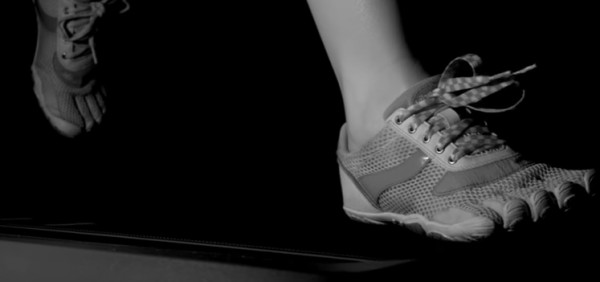By Ana Verayo, | April 14, 2017

This phenomenon is what scientists from the University of California at Berkeley call "catastrophic knot failure." (YouTube)
Scientists finally an answer to why our shoelaces always come undone. In a new study, scientists suggest that apart from faulty shoe-tying techniques, walking is also a major driving force in why a perfectly knotted shoelace can quickly unravel.
This phenomenon is what scientists from the University of California at Berkeley call "catastrophic knot failure." According to the co-author of the study, Oliver O'Reilly of UC Berkeley, during treadmill experiments, it only took several minutes for shoelaces to untie despite no apparent footwear malfunction.
Like Us on Facebook
In this new study, the team studied the untying process. This annoying shoelace dilemma starts when the foot repeatedly steps on the ground creating impact, which loosens the central knot. When we walk, the legs' swinging motions can cause the free ends of the shoelaces to whip around and eventually slide itself loose from the knot. When one end comes free, this results in a "runaway knot failure," the scientists explained.
During experiments, researchers observed runner's shoes on a treadmill and a pendulum with a swinging arm that hits a platform, similar to how a foot strikes the ground. The pendulum arm was tied up with shoelaces and possessed a weight similar to a swinging leg. Scientists have confirmed that both foot impact and laces in constant motion can unravel even the sturdiest of knots.
Apart from these crucial factors, researchers also tested knot tying techniques. The traditional shoelace knot technique that we were taught as a kid is apparently a weak knot, the researchers said. However, the team did not test double knotting.
These new findings do not aim to revolutionize how we tie our shoes but according to the co-author of the study, Christopher Daily-Diamond of UC Berkeley, after running hundreds of pendulum tests, it's actually hard to break old habits. Despite new findings, I still find myself tying the weak knot, he said.
This new study was published in the journal Proceedings of the Royal Society A: Mathematical and Physical Sciences.
-
Use of Coronavirus Pandemic Drones Raises Privacy Concerns: Drones Spread Fear, Local Officials Say

-
Coronavirus Hampers The Delivery Of Lockheed Martin F-35 Stealth Fighters For 2020

-
Instagram Speeds Up Plans to Add Account Memorialization Feature Due to COVID-19 Deaths

-
NASA: Perseverance Plans to Bring 'Mars Rock' to Earth in 2031

-
600 Dead And 3,000 In The Hospital as Iranians Believed Drinking High-Concentrations of Alcohol Can Cure The Coronavirus

-
600 Dead And 3,000 In The Hospital as Iranians Believed Drinking High-Concentrations of Alcohol Can Cure The Coronavirus

-
COVID-19: Doctors, Nurses Use Virtual Reality to Learn New Skills in Treating Coronavirus Patients







